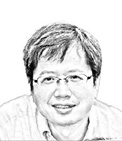Matisse’s ‘art of wild beasts’ on full display at UCCA Edge
Matisse by Matisse” is the Chinese mainland’s first comprehensive exhibition of the life and work of Henri Matisse (1869-1954), the 20th century Modernist master and inventor of Fauvism.
Showing at UCCA Edge in Shanghai through February 18, the exhibition features more than 280 artworks as well as textiles and more from the artist’s own collection. It covers Matisse’s entire career and the full range of his practice, such as oil painting, ink painting, sculpture, print, cut-out, illustration and textile.
The exhibition, a collaboration with Musée Matisse in Le Cateau-Cambrésis, includes the artist’s academic beginnings, pieces representative of his turn toward Fauvism, experiments leading to his invention of the paper cut-out later in life, works from the culmination of a lifetime of artistic exploration, and his design of the Vence Chapel.
Born on December 31, 1869, in Le Cateau-Cambrésis, northern France, Matisse came from a textile family that had been in the business for more than 300 years.
Two years before his death, the artist bequeathed the most prized works from his own collection to his hometown, establishing the core of the collection of Musée Matisse. He took care in choosing the pieces and was involved in the design of the original gallery spaces, down to the details of the display of each artwork.
The title “Matisse by Matisse” was inspired by his high level of involvement, emphasizing Matisse’s role as curator.
The exhibition is divided into 11 sections, following the chronology of the artist’s life and career.
“Voyage to Tahiti” is one of the highlights. It examines the impact that Matisse’s 1930 trip to French Polynesia had on his practice. At a crossroads and facing illness as he reached the age of 60, Matisse decided to throw himself into a new challenge, traveling to Tahiti to search for new forms of light. He would slowly digest the insights gleaned in the Pacific over the next few years, eventually producing groundbreaking works such as “Window in Tahiti,” “Oceania” and “The Sky.”
Taking inspiration from his works, each exhibition room is specially designed with the roofs and wall decorations in the shape of colorful paper cut-outs, creating a unique visual experience for the viewers.
The exhibition also features a special section exploring the influence of Matisse and Fauvism on the modern art movement that emerged in China between the 1920s and 1940s. Through archival materials and works by major artists, including Sanyu (1900-1966), Liu Haisu (1896-1994) and Guan Liang (1900-1986), the section traces the transmission of Matisse’s art from France to China. Dusting off a forgotten corner of the “prehistory” of Chinese contemporary art, the section reveals how Matisse inspired Chinese artists to create revolutionary new works.
- About Us
- |
- Terms of Use
- |
-
 RSS
RSS - |
- Privacy Policy
- |
- Contact Us
- |
- Shanghai Call Center: 962288
- |
- Tip-off hotline: 52920043
- 沪ICP证:沪ICP备05050403号-1
- |
- 互联网新闻信息服务许可证:31120180004
- |
- 网络视听许可证:0909346
- |
- 广播电视节目制作许可证:沪字第354号
- |
- 增值电信业务经营许可证:沪B2-20120012
Copyright © 1999- Shanghai Daily. All rights reserved.Preferably viewed with Internet Explorer 8 or newer browsers.


